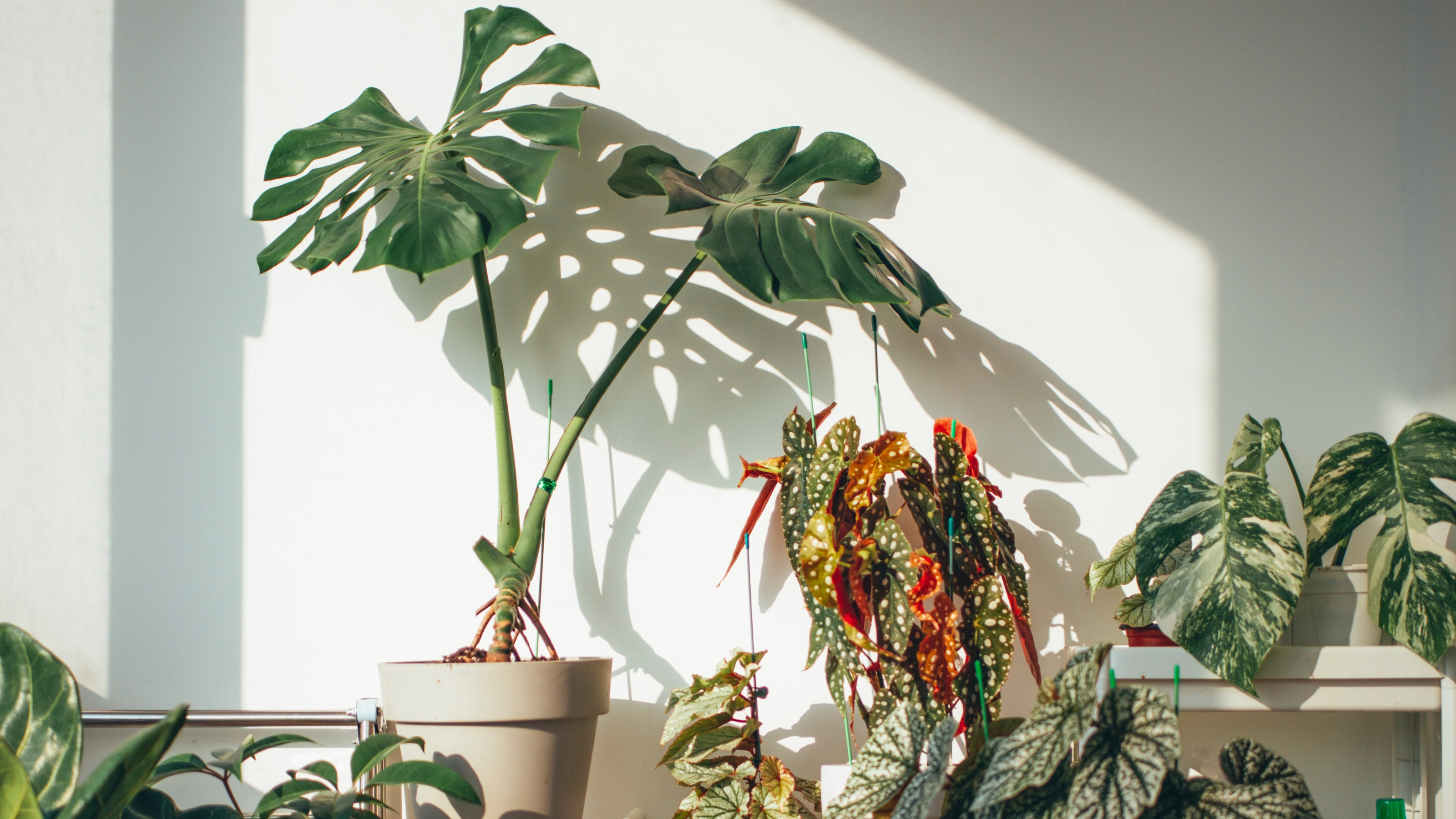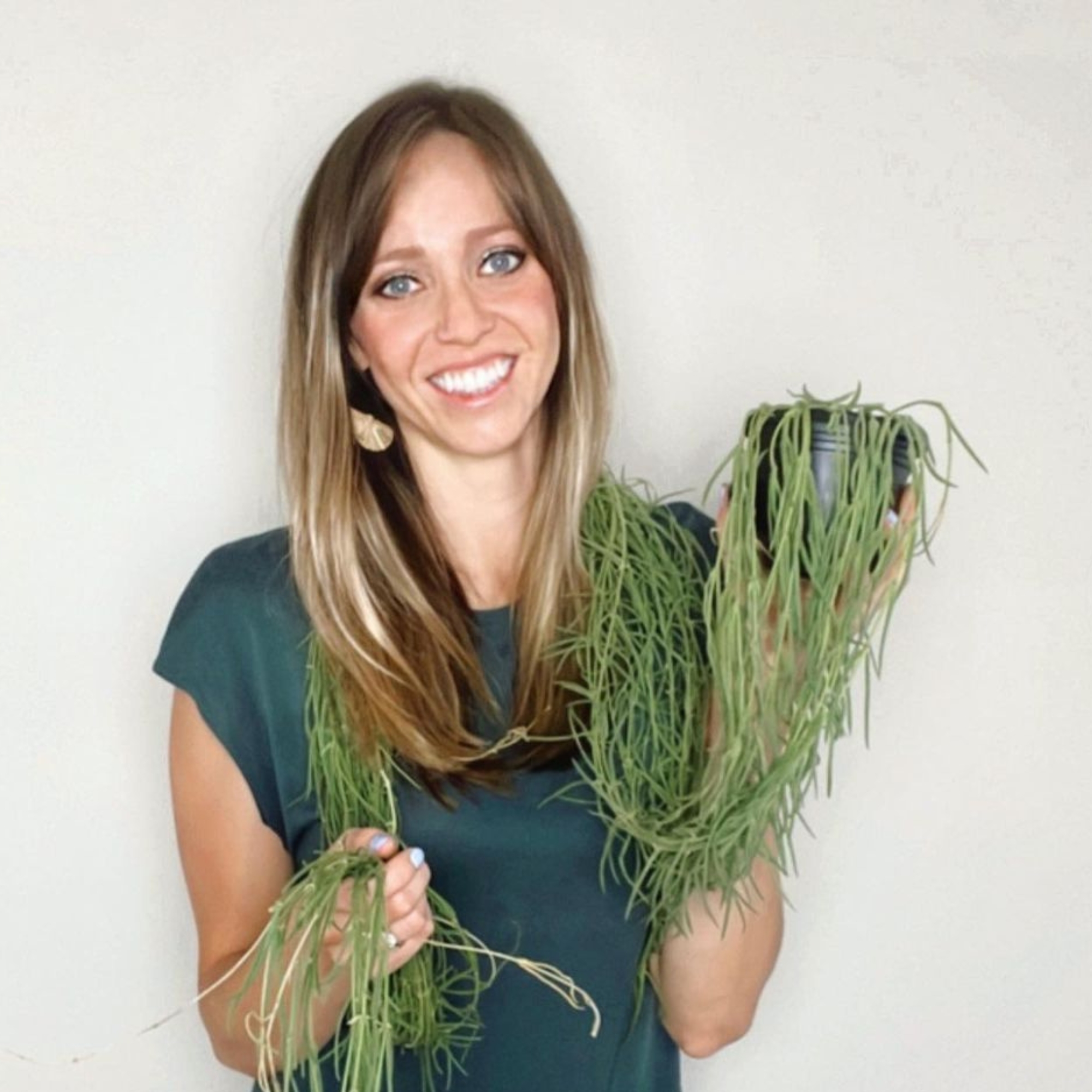

Quick Menu: How to Winterize Houseplants
Wondering how to winterize houseplants to protect them from the colder months? Temperatures are dropping, which means it’s time to get cozy when stepping outside and even inside your own home, as it could get cold in there as well.
Your plant babies may be in trouble if you don't take the extra steps to prep them for the months ahead. You may be worried about less light, less humidity, and extreme temperatures.
You definitely want to treat your best indoor houseplants with love and care so they're thriving and growing. Plant expert, Natalie Garwood of @happy_little_houseplant, gave us her top ten tips on winterizing houseplants.
How to winterize houseplants
1. Bring Houseplants Indoors
If you are like me and moved your houseplants outdoors to soak up all the summer sun and humidity, you will need to prepare them to move back inside when the temperature starts dipping into the 50s. Start treating your outdoor houseplants for pests while they are still outside and before you bring them into your home.
2. Check soil for water level
With fewer hours of sunlight in the colder months, your houseplants will have less time to photosynthesize. The soil will stay wet longer without the heat and sunlight they are used to receiving in the spring and summer. It is always important to check the soil with your finger before watering, and this is especially true in the fall and winter. Instead of watering once a week, you may learn that some houseplants only require water every other week.
3. Leaf drop & yellowing leaves
As the seasons change, it can be perfectly normal to see some of your houseplants drop a few leaves, or even have some leaves turn yellow. Do not panic! Your plant is likely adapting to the change in sunlight levels and/or a decrease in humidity. Keep reading for tips on how to avoid losing leaves.
4. Use grow lights
All houseplants convert sunlight into energy and growth through the process of photosynthesis. During winter, your plants will receive fewer hours of sunlight, meaning they will have fewer hours to convert that light into growth. Your plants can thrive through the winter by adding a high-quality grow light like this GooingTop LED light from Amazon, which simulates the sun and allows them to continue growing.
5. Increase humidity
On many occasions, the houseplants you bring into your home are likely native to a tropical environment, so warmth and humidity are ideal for them to thrive. Unlike cacti and succulents, tropical houseplants can stay lively and healthy throughout the colder months if you increase the humidity in your home. You can do this easily by adding a humidifier, like this Rosekm humidifier from Amazon, near your houseplants, or simply by adding a humidity tray filled with pebbles or rocks, and water.
6. Avoid extreme temperatures
Always make sure your plants are in a warm environment, ideally between 65-75 degrees Fahrenheit. For most houseplants, temperatures below 50 degrees can cause problems, starting with discoloration of the foliage.
7. Keep the leaves clean
It may sound a little excessive, but it is imperative to make sure the leaves of your houseplants are clean in the winter. Dust and debris can build up on the leaves, making it harder for your plants to photosynthesize. Since your plants are already getting fewer hours of sunlight, they will need every second of light they can get. I recommend using microfiber gloves (you can get a three-pack of gloves from Patelai on Amazon) and a leaf shine product (I love this Crystal Leaf shine spray available on Amazon) but even water on a damp cloth will do the trick to remove the buildup on the leaves.
8. Pest prevention
When sunlight and humidity are at an all-time low, your houseplants tend to be more “stressed” and are unfortunately more susceptible to pests. Be on the lookout for aphids, spider mites, as well as scales on the leaves and stems of your plants. If you find pests, be sure to treat them with a neem-based product and/or an insecticidal soap for several weeks until the pests are no longer visible. This Bonide insecticidal soap from Amazon should do the job.
9. Hold off on fertilizer
For your plants that are no longer actively growing, hold off on fertilizing until the spring and summer months. When plants are in a dormant state, they are not actively converting sunlight into growth, therefore, fertilizing is not necessary.
10. It's okay to fail
Always remember that it is okay to fail! Green thumbs are learned and developed through years of experience and practice. Your failures with houseplants can either discourage you OR become learning experiences and shape you into a more knowledgeable plant owner for the future. If a plant dies over the winter, I would challenge you to do some research to try to identify what went wrong so you can keep learning and growing!

Natalie Garwood is an urban plant lover here to share tips to help your plants thrive. She provides plant nursery tours, care tips, and plant prop experiments on her Instagram page, @happy_little_houseplant.
Best plants to buy

Price: $13.63

Price: $14.99

Price: $21.99

Price: $18.47

Price: $11.99

Price: $7.99
Frequently asked questions
When does winter start?
Winter usually lasts between late December and mid-March in the US.
Why do I have to winterize my plants?
It's important to take extra care of your houseplants during the colder months because there is less sunlight and humidity for them to absorb. Keep on eye on their health and don't panic if you see yellow leaves.
Developing a green thumb can be tricky at any time of the year but it's especially important during the winter months. It's okay if your plants don't make it, you can find something a little better suited to a small space, like the best plants for apartments.
Join our newsletter
Get small space home decor ideas, celeb inspiration, DIY tips and more, straight to your inbox!

About Me:
Hello! My name is Aida M. Toro and I am a freelance writer that loves cultivating stories about amazing people, fashion, interiors, art, and food. I currently write for Harper’s Bazaar Vietnam, The House Magazine, Hobnob Magazine, The C-Word, and Real Homes. I live in West New York, New Jersey, which is literally a 10-minute ferry ride or 20-minute bus ride away from New York City. Although I was born and raised in West New York, I consider NYC my home, as I believe it to be the place where all dreams come to fruition, and of course, spend most of my time in. When I’m not writing, I love perusing the city streets and taking snaps with my iPhone of street art along with random things, scoping out new restaurants as well as their spaces, shopping at some of my favorite stores, spending time with family and friends, walking my cockapoodle Benji, and working out at Lifetime or DOGPOUND, which are some of the top fitness spaces in Manhattan and overall the U.S.